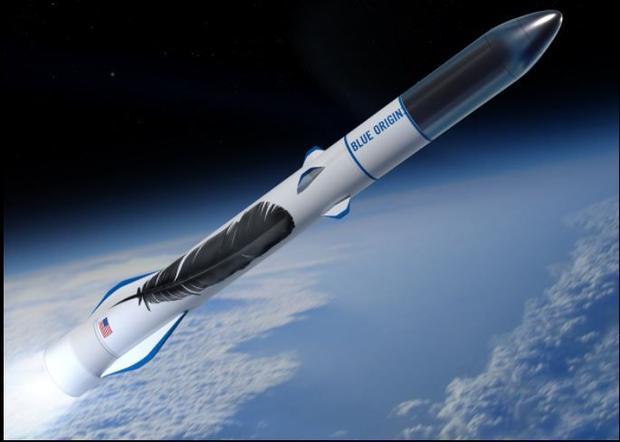The Air Force announced the award of three Evolved Expendable Launch Vehicle (EELV) Launch Service Agreements to Blue Origin, Northrop Grumman Innovation Systems, and United Launch Alliance on Wednesday, October 10, according to the Secretary of the Air Force Public Affairs.
The awards are part of the DOD’s coveted Launch Service Agreement or LSA. The program aids in the development of commercial rockets and ensures that the U.S. government has constant access to space for its national security payloads. The EELV program has successfully launched 72 NSS missions, dating back to 2003, using the Atlas V and Delta IV launch vehicles.
Through public-private partnership agreements, the goal of the acquisition strategy is to satisfy federal law by ensuring that the U.S. maintains assured access to space, with at least two domestic launch service providers and without reliance on non-allied rocket propulsion systems.
“I’m excited to announce these creative partnerships that directly support the Air Force’s strategy to drive innovation and leverage commercial industry. These awards are a leap forward in space launch capabilities, ensuring continued U.S. dominance in space,” said Dr. William Roper, Assistant Secretary of the Air Force for Acquisition, Technology, and Logistics.
United Launch Alliance
Through 2024, ULA will receive $967 million to develop its upcoming rocket called the Vulcan, also known as the Vulcan Centaur. The rocket has been under development since 2014, and ULA expects the first launch of the new rocket to occur no earlier than mid-2020.
Building on the capabilities of the company’s current rockets, the Atlas V and Delta IV, the new ULA Vulcan will incorporate the best of both systems — with Vulcan deployment beginning with the first stage, based on the Delta IV’s fuselage diameter and production process, expected to use two BE-4 engines.
Northrop Grumman Innovation Systems
Northrop Grumman Innovation Systems used to be known as Orbital ATK Inc. and operates as the aviation division of parent company Northrop Grumman. The company is receiving $791.6 million to develop their Omega rocket.
The company’s Omega rocket is proposed as a vehicle to launch national security satellites for the United States Air Force and could launch other government and commercial payloads, including to Geostationary transfer orbit. Crewed spacecraft could also be launched, just like the predecessor Ares I and Liberty rockets, which were designed to launch the Orion space capsule.
Blue Origin
Blue Origin will take home $500 million to aid in the development of its future New Glenn rocket. The New Glenn is a reusable orbital vehicle designed to land back on Earth after launch.
Design work on the vehicle began in 2012. The high-level specifications for the vehicle were publicly announced in September 2016. New Glenn is described as a 7-meter-diameter (23 ft), two- or three-stage rocket. Its first stage will be powered by seven BE-4 engines that are also being designed and manufactured by Blue Origin.
Like the New Shepard suborbital launch vehicle that preceded it, the New Glenn’s first stage is designed to be reusable. The main assembly of the New Glenn launch vehicle will occur in the Blue Origin rocket manufacturing facility in Florida, near Launch Complex 36 which the company leased from Spaceport Florida.
SpaceX, a current launch provider for the Defense Department, was not on the list. This does not mean the company will not be able to launch satellites for the Department of Defense (DOD), though. SpaceX just won’t get US military funding for its projects under development reports The Verge.

















